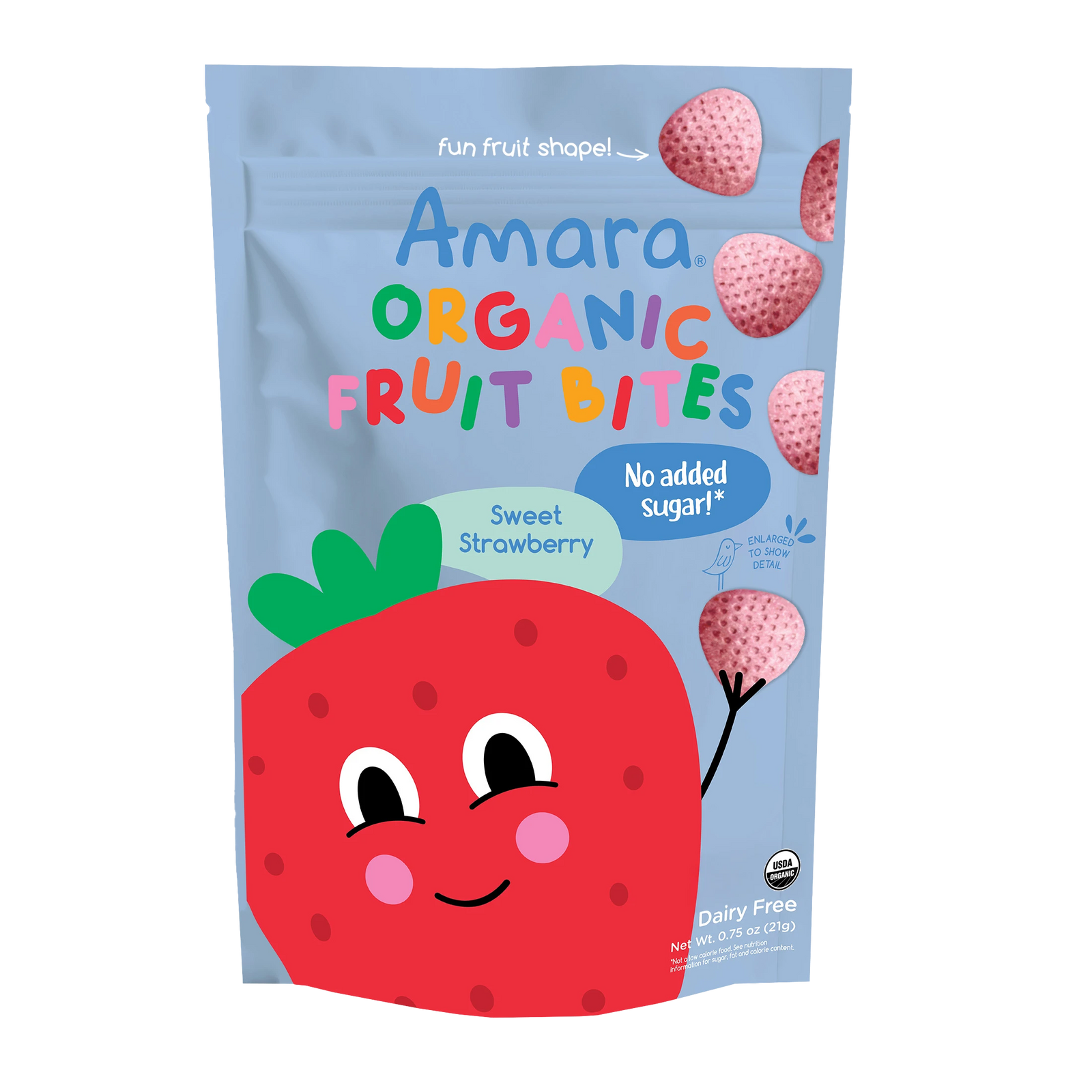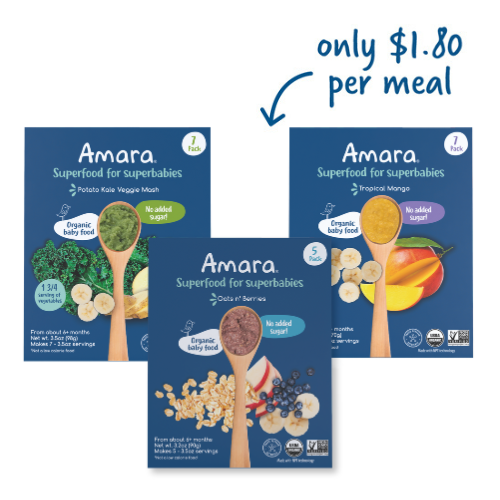Part II
Importance of fruits and vegetables in baby diet
In the Feeding Infants and Toddlers Study (FITS), Saavedra et al. (2013) they point out that fruit and vegetable consumption starts already during weaning time with low intakes. It is known that the taste and likes of foods are set in the early age of life. Infants and children who consume more fruits and vegetables early in their lives, will be more likely to consume fruits and vegetables as adults (Coulthard et al 2010). This in turn is related to a better health and less costs for disease control at an overall population level.
Baby Food Pouches and Sugar
A big subject in nutrition is the high consumption of sugar, in all variations (glucose, fructose, sucrose, maltose, corn syrup, etc.). Walker and Goran found the mean percentage of total calories from sugar in the analyzed baby products was nearly 40% and seven baby products contained even > 50% of their total calories from sugar. Further, they found a massive variability in the actual vs labeled total sugar content of baby foods. Cogswell et all analyzed over 1000 baby and toddler products finding no added sugar in the majority of infant vegetables, dinners, fruits and dry/instant cereal. However, over 50% of infant ready-to-serve mixed grains and fruits contained ≥1g added sugar. In particular, a study done in Germany found very high sugar levels in the baby fruit pouches. The sugar was not necessarily added sugar, but actually due to the fruit puree being cooked, and in many cases cooked for more time than needed. This concentrates the sweetness of the baby food pouches. It was also sometimes seen when they add fruit juice concentrate (Ökotest 2015).
Currently, no standard guidelines exist for assessing sodium and sugar content of complementary infant and toddler foods. (Cogswell et al 2014) Approximately 79% of US children aged 1-3 years exceed the upper level of 1500mg/d of sodium. Plus, it is complicated to see the difference as nutritional labels do not differentiate between sugar from the food itself or added sugar (Elliot CD 2010). At Amara, we do not add sugar or salt (sodium) to the baby food products. We only use whole fruit and vegetable ingredients and we avoid any added supplements, carriers or additives so what you see really is what you get.
Why is Amara Dry?
Fruits and vegetables have water levels higher than 80% which makes them very perishable and they need a lot of care in their cultivation, harvest, transport, storing before reaching the consumer. By drying them, the fruit and vegetables can be collected and processed when they are ripe, so that they have their best texture, flavor, aroma and nutrient content. (Sagar & Kunar 2010). At Amara, we dry at low /cold temperatures to help us maintain not only heat sensible vitamins, but also the fiber and bioactive compounds and the texture and real taste of the fruits and vegetables.
Plus, the other advantage of Amara is that they are light, need little space to store, and are easy to prepare. This is the dream we have with Amara, to make the closest thing to homemade that is easy to prepare, just by adding water, breastmilk or formula. With the correct amount of liquid, the expected consistency of the actual fruits and vegetables comes back to life. As a tip, if possible, if you let the prepared meal sit for 3-5 minutes, the flavor and the taste will further improve. You can even be more creative in using Amara in recipes for the whole family, for recipes for Toddler Energy Bites and for DIY Kale pancakes.
To read Part I of the Introduction to Solids by PhD Doctor Sonia Schiess click here.
References:
Cogswell et al Sodium and sugar in complementary infant and toddler foods sold in the United States; Pediatrics 2014
Coulthard et al Long-term consequences of early fruit and vegetable feeding practices in the United Kingdom. Public Health Nutrition: 13(12), 2044–2051
Elliot CD Sweet and salty: nutritional content and analysis of baby and toddler foods; J Public Health 2010
Ökotest Ratgeber Kleinkinder 2015, www.oekotest.de
Saavedra et al Lessons from the Feeding Infants and Toddlers Study in North America: what children eat, and implications for obesity preventions; Ann Nutr Metab 2013 (suppl 3)
Sagar and Kumar 2010, Recent advances in drying and dehydration of fruits and vegetables: a review; J Food Technol 47(1): 15-26
Walker, Goran: Laboratory determined sugar content and composition of commercial infant formulas, baby foods and common grocery items targeted to children; Nutrients 2015, 7.







Leave A Comment